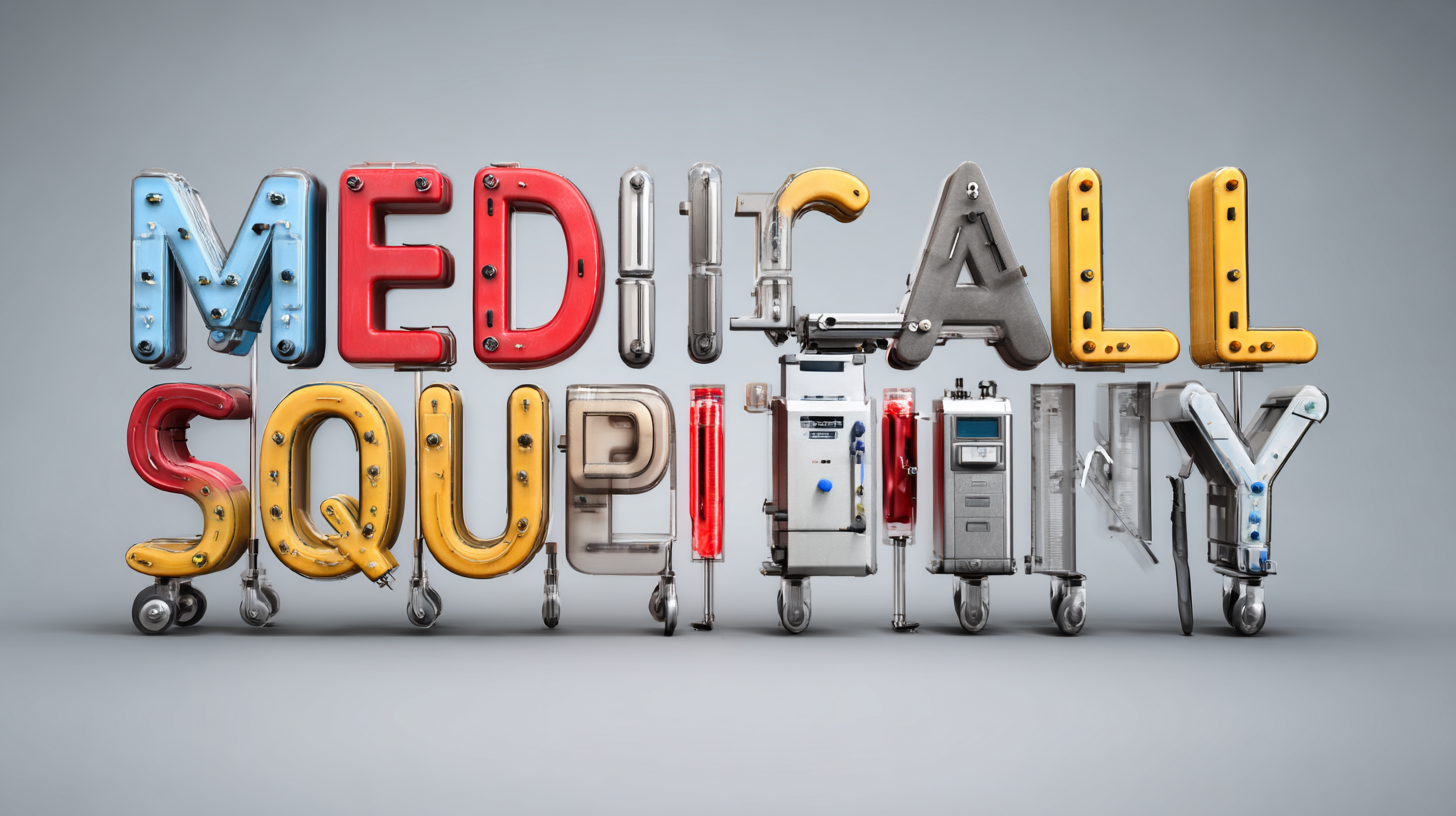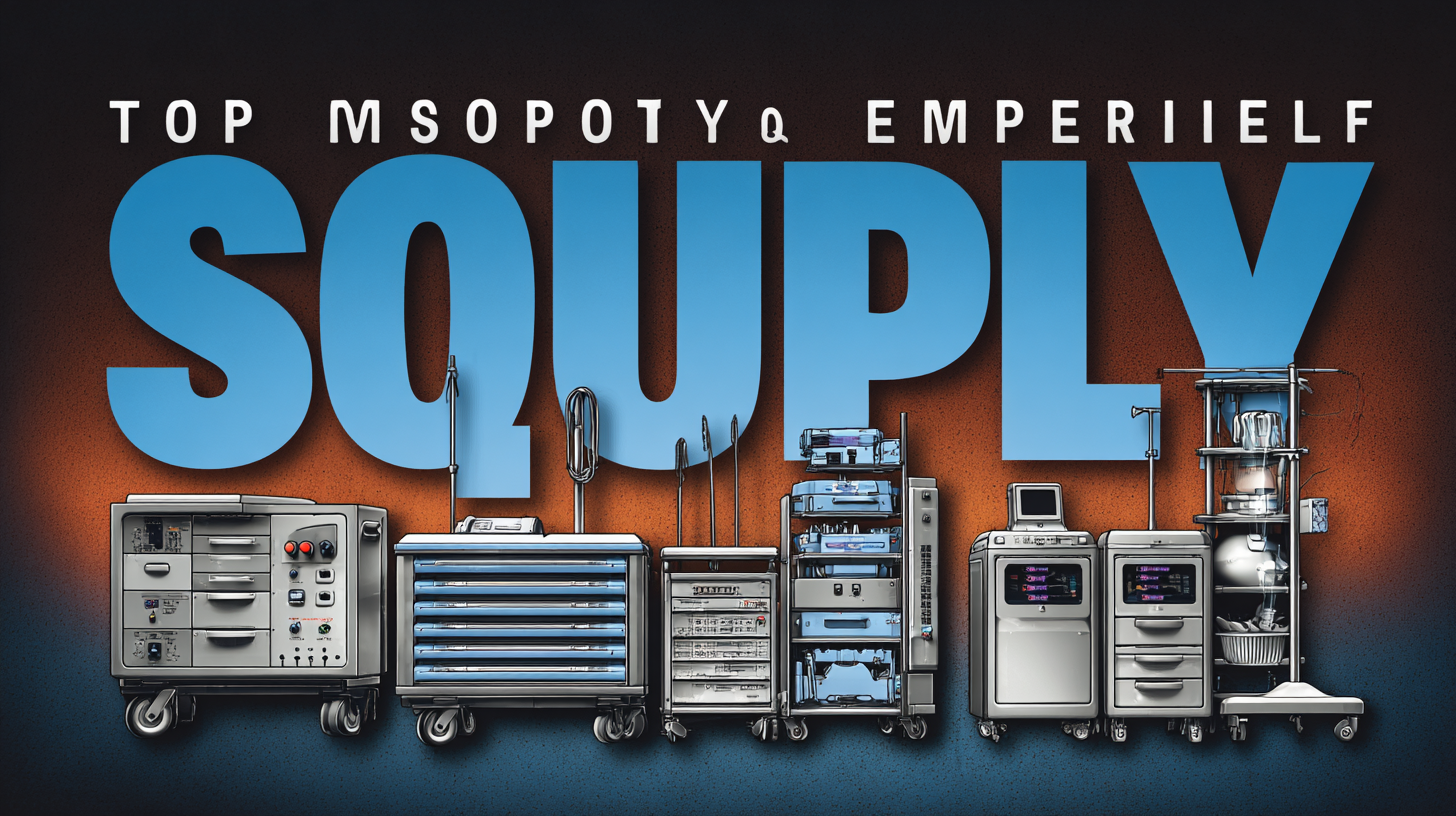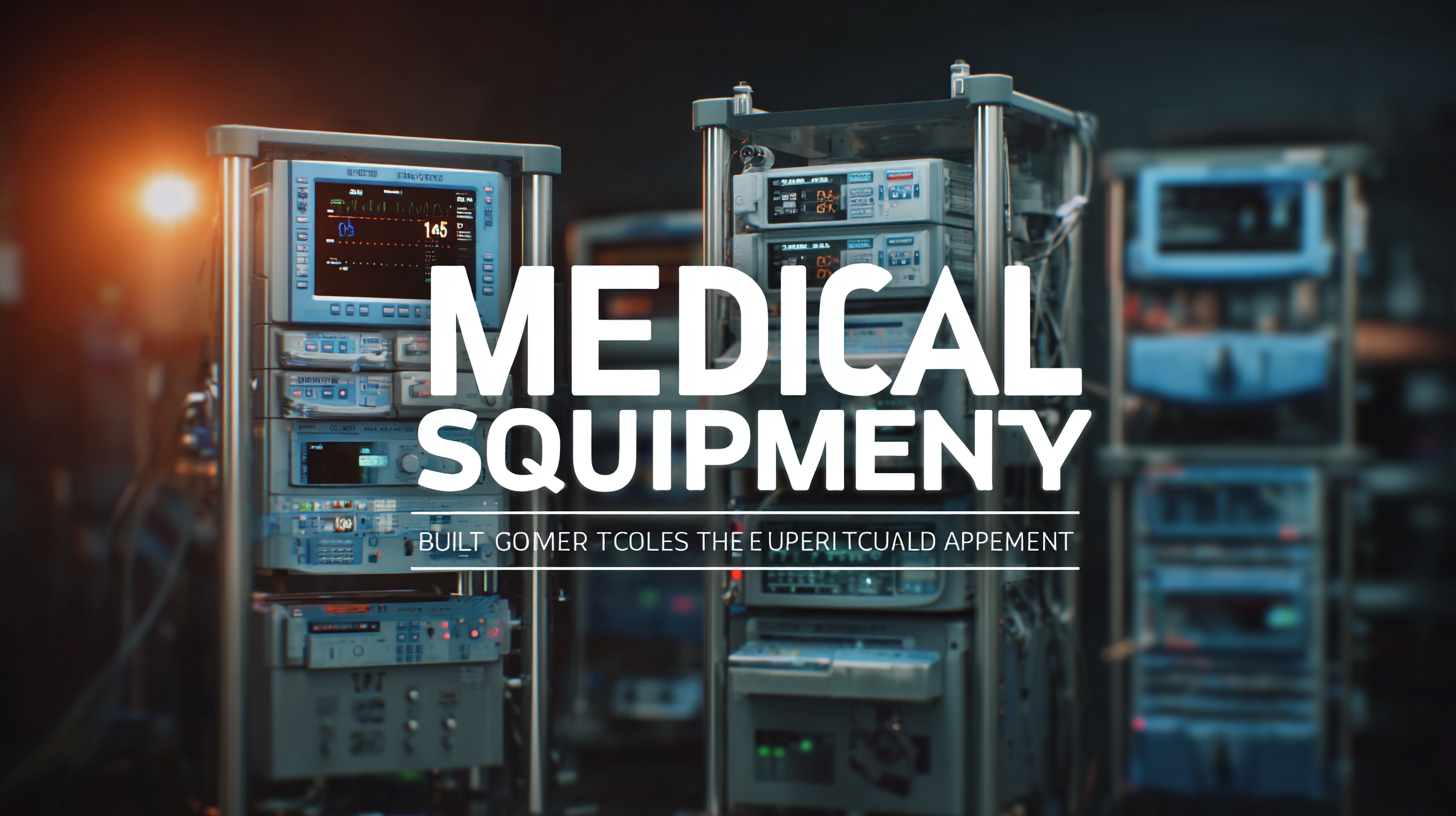Click here to browse our On The Mend Portfolio!
Exploring the Features and Applications of Top Medical Supply Equipment: A Complete Buyer’s Guide
In the ever-evolving healthcare landscape, the importance of high-quality Medical Supply Equipment cannot be overstated. According to a recent report by Grand View Research, the global medical equipment market is projected to reach USD 659.9 billion by 2025, with a significant portion attributed to advancements in medical supplies and technology. As hospitals and clinics strive to enhance patient care while improving operational efficiency, the demand for innovative and efficient medical supplies is surging. This buyer's guide will explore the essential features, benefits, and applications of top medical supply equipment, providing valuable insights for healthcare professionals looking to make informed purchasing decisions. Understanding industry standards and guidelines will also be highlighted, ensuring that medical practices are equipped with the tools necessary to meet both regulatory requirements and patient needs effectively.

Benefits of After-Sales Support in Medical Supply Equipment: Enhancing User Experience
After-sales support is a critical factor in enhancing the user experience of medical supply equipment. According to a report by MarketsandMarkets, the global medical equipment market is projected to reach $663.3 billion by 2027. As this market expands, the importance of robust after-sales services becomes increasingly evident. These services not only ensure the optimal functioning of medical devices but also foster confidence among healthcare providers. Efficient training sessions and user manuals can significantly reduce operational errors, ultimately leading to better patient outcomes.

Furthermore, a survey conducted by The Institute for Healthcare Improvement revealed that 74% of healthcare professionals believe that continuous support and maintenance lead to greater equipment satisfaction. Reliable after-sales services can facilitate quick troubleshooting and regular maintenance, which are essential in a field where every second counts. By guaranteeing that medical supply equipment is always in peak condition, suppliers can build strong relationships with healthcare facilities, translating to repeat business and a positive reputation in the marketplace.
Understanding Repair Costs: Analyzing Maintenance Expenses in Medical Equipment
When investing in medical equipment, understanding repair costs is vital for maintaining effective operations and budgeting appropriately. According to a recent report by the Medical Equipment Maintenance Association, nearly 30% of healthcare facilities unexpectedly exceed their maintenance budgets due to unforeseen repair expenses. Regularly scheduled maintenance can significantly mitigate these costs. For instance, hospitals that implement a proactive maintenance strategy can reduce their annual repair expenses by up to 20%.
Tips: Establish a routine maintenance schedule for all medical equipment. This practice not only prolongs the lifespan of the equipment but also minimizes costly repairs down the line. Keep detailed records of service history and condition assessments to identify trends in equipment performance that may indicate potential issues.
Another critical insight identified in the 2022 Healthcare Equipment Trends Report is that nearly half of medical devices face downtime due to repair needs, affecting both patient care and financial outcomes. Investing in training staff on proper equipment usage can drastically lower repair needs and associated costs. Moreover, consider leveraging predictive maintenance technologies, which can identify potential equipment failures before they become critical problems, ensuring reliability and efficiency within healthcare settings.
Tips: Regularly train medical personnel on the latest maintenance protocols and troubleshooting techniques. Investing in staff education directly contributes to better care and can help avoid costly repairs by promoting proper equipment handling.

How to Choose the Right Medical Equipment: Key Factors and Industry Standards
Choosing the right medical equipment is crucial for ensuring patient safety and operational efficiency in healthcare settings. Industry standards, such as those set by the FDA and ISO, guide healthcare professionals in selecting reliable and compliant medical devices. For instance, according to a 2022 report by Grand View Research, the global medical equipment market is expected to reach USD 700 billion by 2028, underscoring the growing demand for quality medical supplies. This statistic highlights the importance of being discerning in your acquisitions to meet both regulatory requirements and patient needs.
Tips: Prioritize equipment that comes with clear labeling and user manuals, as these resources help minimize errors in usage. Moreover, consider the total cost of ownership, which includes maintenance and operational expenses, rather than just the initial purchase price.
It's also vital to keep abreast of technological advancements. For example, telemedicine and remote monitoring equipment have surged by over 30% since 2020, as indicated in a recent market analysis by Research and Markets. These innovations not only improve care delivery but also align with contemporary healthcare trends.
Tips: When evaluating new technologies, conduct a thorough needs assessment within your organization to determine what fits best with your clinical workflow and patient demographic.
Essential Medical Equipment by Application
This chart illustrates the distribution of various categories of medical equipment based on their applications in different healthcare settings.
Exploring Advanced Features of Medical Supply Equipment: Innovation and Efficacy in Healthcare
The evolution of medical supply equipment is heavily influenced by advanced technologies that enhance the efficacy and functionality of healthcare delivery. As innovations continue to reshape the industry, non-invasive ventilation masks are gaining traction, with the global market projected to reach USD 217.7 million by 2025 and anticipated growth hitting USD 304.9 million by 2033, driven by a compound annual growth rate (CAGR) of 4.3%. These masks exemplify how innovative features can significantly improve patient care, particularly in the domain of respiratory therapy.
Moreover, the integration of big data in healthcare is set to create a profound impact on medical supply equipment. The global healthcare big data market is expected to grow from USD 50.74 billion in 2024 to USD 145.42 billion by 2033, reflecting a shift towards data-driven decision-making in medical practices. This growth is not merely about numbers; it symbolizes a transformative approach wherein digital tools and connected devices combine to enhance patient outcomes and streamline healthcare processes. By exploring these advancements in medical technology, healthcare organizations can better adapt to emerging challenges and leverage innovative solutions for improved patient care.
| Equipment Type | Features | Applications | Efficacy |
|---|---|---|---|
| Patient Monitors | Real-time vitals tracking, wireless connectivity, customizable alerts | ICU, Emergency Rooms, Surgery | Improved patient safety and rapid response |
| Surgical Instruments | Precision cutting, ergonomic design, sterilizable | Operating Rooms, Surgical Procedures | Enhanced surgical outcomes, reduced recovery time |
| Diagnostic Devices | Rapid testing, integrated software, user-friendly interfaces | Clinics, Laboratories, Home Care | Quicker diagnosis, better patient management |
| Rehabilitation Equipment | Adjustable settings, real-time feedback, mobile integration | Physical Therapy, Home Rehabilitation | Increased patient engagement, faster recovery |
| Personal Protective Equipment (PPE) | High filtration efficiency, comfort fit, disposable options | Hospitals, Labs, Emergency Services | Enhanced safety, reduced infection rates |
The Importance of Regulatory Compliance in Medical Equipment Purchases and Maintenance
When purchasing medical equipment, regulatory compliance is a critical aspect that cannot be overlooked. Understanding the standards set by governing bodies, such as the FDA in the United States or the EMA in Europe, is essential for ensuring that the equipment is safe and effective for patient use. These regulations are designed to protect both patients and healthcare providers by mandating rigorous testing and evaluation processes before any medical equipment reaches the market. Buyers must be diligent in verifying that the products they consider meet these compliance criteria to avoid potential legal liabilities and to ensure the highest quality of care.
Furthermore, maintaining regulatory compliance doesn’t end with the purchase. Healthcare facilities must implement regular maintenance and monitoring protocols to ensure that their equipment continues to meet safety standards throughout its lifespan. This includes keeping up with recalls, conducting routine inspections, and training staff on the proper use of the equipment. Non-compliance not only poses risks to patient safety but can also lead to hefty fines and damage to a facility's reputation. Therefore, a comprehensive understanding of the regulatory landscape is crucial for anyone involved in the procurement and maintenance of medical supply equipment.
View Products
- Bathroom Safety & Shower Systems
- Canes, Knee Walkers, Rollators & Wheelchairs
- Compression Socks, Stockings & Custom Garments
- CPAP Machines, Devices, Accessories & Supplies
- Incontinence Supplies
- Lift, Reclining, and Sleeper Chairs
- Power Scooters, Power Chairs & Accessories
- Ramps & Handicap Access
- Stair, Platform & Portable Lifts
- Blog
Our Locations
Visit Us in CT, NY & CA
Looking for a 'medical store near me'? Call On The Mend for the equipment and service you need!
